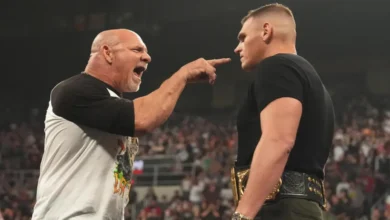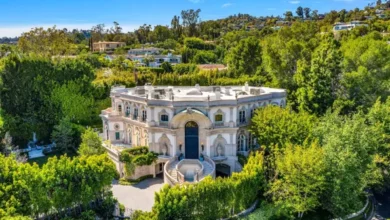The Rise and Roar of the No Kings Protest

No Kings Protest The phrase “no kings protest” isn’t just a slogan it’s a declaration of values, a rebellion against outdated systems, and a rising tide of resistance against absolute authority. All over the world, whether it’s monarchy, authoritarianism, or symbolic rulers with unchecked power, people are taking to the streets with signs, voices, and conviction. The No Kings protest represents a modern awakening, a movement grounded in equality, democratic ideals, and the belief that no person should be exalted above others by birthright.
From ancient kingdoms to current constitutional monarchies, the no kings protest has grown louder in recent years, especially in regions where people are beginning to question why monarchs still hold ceremonial or real power. Fueled by digital platforms, youth activism, and global interconnectedness, this protest is less about chaos and more about clarity—a clear message that hierarchical structures no longer serve the public good.
Understanding the Philosophy Behind the No Kings Protest
The core ideology behind the No Kings protest revolves around the idea that no human being is born inherently superior to another. Monarchies, whether symbolic or authoritative, are built on the idea of divine or noble right concepts that feel deeply outdated in a world that champions merit, equality, and representation.
The No Kings protest doesn’t necessarily advocate for hostility toward individual royals. Rather, it questions the institution itself. Protesters argue that celebrating royalty perpetuates a class divide, enshrines privilege, and suggests that some lives are more valuable than others.
What makes this movement powerful is that it unites people across political spectrums. Libertarians, progressives, republicans (in the political philosophy sense), and even moderate centrists often find common ground in rejecting hereditary privilege. The No Kings protest is a conversation starter about fairness, civic values, and where society should invest its loyalty.
Historical Echoes of the No Kings Protest
History is peppered with revolutions and uprisings that echo the modern no kings protest message. From the French Revolution to the rise of republics in Latin America, people have consistently challenged the notion of inherited power.
The slogan might be new, but the sentiment is ancient. Long before social media hashtags, commoners rose against royal excess. The American Revolution famously declared independence from a king, not just for sovereignty but for a rejection of monarchy itself. That foundational rejection has since inspired modern no-kings protest movements around the globe.
Across Asia, Africa, and Europe, countries that once operated under monarchies have either abolished them or significantly reduced their power. In many of these cases, mass protests, civil unrest, or intellectual movements paved the way. The No Kings protest we see today stands on the shoulders of centuries of courage and defiance.
The Global Spread of the No Kings Protest
From Bangkok to London, from Madrid to Morocco, the No Kings protest has transcended borders. In Thailand, for example, the youth-led movement calling for reform of the monarchy shocked the world with its boldness. What once was taboo became a mainstream conversation. In Spain, protests against the monarchy have erupted during economic crises, revealing tensions between the crown and the people.
In the United Kingdom, anti-monarchist sentiments have gained traction, particularly among younger generations who question the relevance of the monarchy in a multicultural, modern democracy. Events like royal weddings or coronations often spark fresh waves of no king’s protest activity.
The internet has made it easier for these protests to go viral. One image, video, or quote can inspire a ripple effect across continents. The power of the No Kings protest lies not just in the streets but in the shared digital conscience of a globally connected public.
Symbols and Language of the No Kings Protest
The symbolism in the No Kings protest is powerful and creative. Crowns are often depicted as broken, upside-down, or crossed out. Protesters wear anti-royal slogans on shirts or carry placards with clever puns and historical references. It’s not uncommon to see imagery that blends medieval symbols with modern protest aesthetics graffiti crowns melting or replaced with democratic emblems.
Language is a key weapon of the movement. Phrases like “abolish the crown,” “no gods, no kings, only people,” and “we kneel to no one” have become rallying cries. The No Kings protest is as much about art, music, and cultural expression as it is about political transformation.
This fusion of creativity and activism makes the message hard to ignore. When artists, poets, and musicians amplify the protest, the culture changes with it. That’s the deeper power of the No Kings protest—it doesn’t just call out a system, it reshapes the cultural narrative that upholds it.
Why Youth Lead the No Kings Protest
It’s no coincidence that the this is largely led by young people. Gen Z and Millennials have grown up in a world where access to information is instantaneous and authority is often questioned. They’re more likely to see monarchies as relics of a bygone era inefficient, outdated, and unjust.
Young protesters bring tech-savviness, bold language, and fearless critique to the movement. They challenge traditional media narratives and demand accountability from governments and figureheads alike. Through viral TikToks, YouTube commentaries, or long Twitter threads, they make the No Kings protest resonate in ways older generations never imagined.
But it’s not just rebellion for the sake of rebellion. Young people are pushing for systems that reflect diversity, justice, and mutual respect. The No Kings protest isn’t anti-culture—it’s anti-inequality.
The Role of Media and Censorship in the No Kings Protest
Coverage of this varies widely depending on the country. In some places, mainstream media offers sympathetic or at least neutral coverage. In others, protestors face media blackouts, misinformation campaigns, or even legal repercussions for dissent.
Censorship remains a major hurdle for the movement. In monarchies with strict lèse-majesté laws, simply participating in or supporting a this can lead to arrest or worse. Protesters often have to use coded language, VPNs, or anonymous platforms to organize and express dissent.
Independent journalism, however, plays a critical role. Podcasts, blogs, and underground publications document these protests and keep the movement alive. The more the official narrative tries to erase it, the more resilient this becomes.
What the No Kings Protest Wants
At its heart, this isn’t just about removing monarchs it’s about rethinking power. The movement asks: who should lead? How should power be distributed? What does accountability look like?
Demands often include a full transition to democratic republics, redistribution of royal wealth, truth-telling about colonial legacies, and removal of monarchical figures from national ceremonies or symbols. The no kings protest wants governance that serves all citizens equally not ones that favor tradition over transparency.
Rather than merely tearing down, the movement also builds up new visions. It’s about progress, not destruction. About creating new myths, not just deconstructing the old ones.
The Future of the No Kings Protest
The No Kings protest isn’t going anywhere. As more people become politically conscious, the hunger for fairness grows. Monarchies may cling to ceremonial roles, but their relevance is increasingly questioned.
The future could bring more constitutional reforms, renaming of public institutions, or even full abolition of royalty in countries still holding onto these symbols. The No Kings protest will evolve with every generation, becoming more inclusive, intersectional, and powerful.
Technology, education, and global solidarity continue to fuel its fire. What started as scattered voices has become a collective chorus for change. The world might not wake up monarchy-free tomorrow, but the seeds have been sown. And they’re growing.
Frequently Asked Questions About the No Kings Protest
What does the No Kings protest stand for?
The No Kings protest stands against inherited power and calls for a more equal, democratic society where no one is treated as superior due to lineage.
Is the no kings protest against all monarchs?
It’s not personal it’s institutional. The protest targets the system of monarchy, not individuals, though royal actions can spark backlash.
Where is the No Kings protest happening most?
Countries with active monarchies, like the UK, Thailand, and Spain, often see the strongest protest movements, especially around national ceremonies.
Are the protests violent?
Generally, the No Kings protest is peaceful. It uses marches, speeches, online campaigns, and art to get its message across.
Is this movement new?
Not entirely. While the term “no kings protest” is modern, the fight against monarchy is centuries old. It’s been modernized for today’s political landscape.
Do people support this movement?
Yes, especially younger generations who value equity and accountability over tradition and ceremony.







